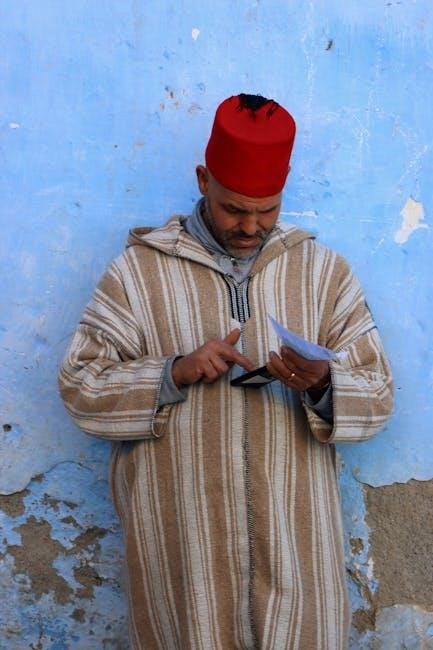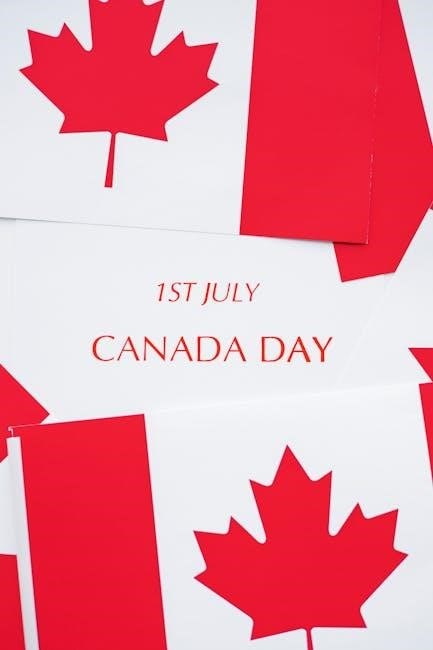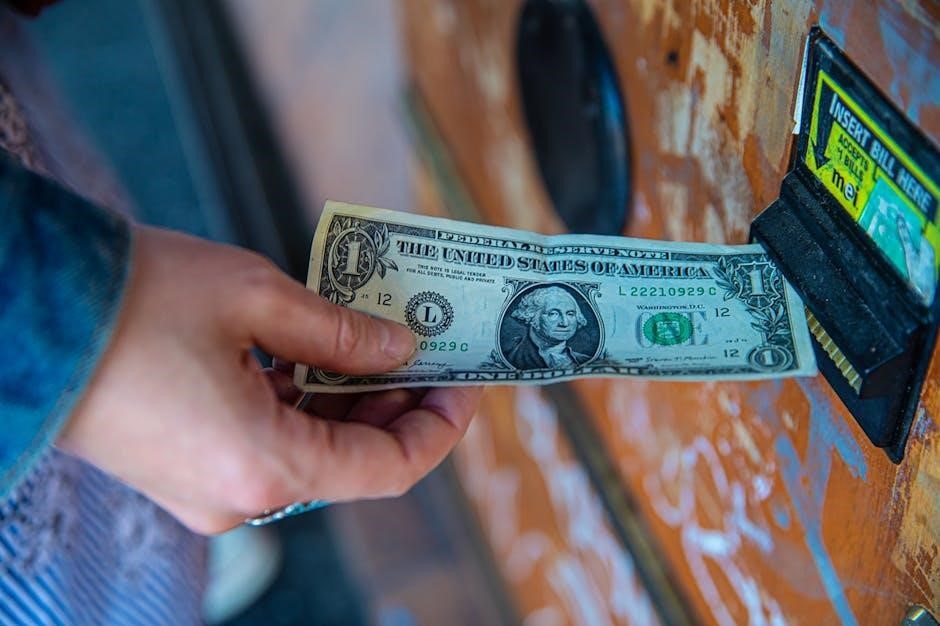
Historical Background of Morocco and America
Morocco and America share a rich historical connection, rooted in the Treaty of Peace and Friendship (1787/1836), with the Washitaw de Dugdahmoundyah Empire playing a pivotal role.
1.1 The Treaty of Peace and Friendship (1787/1836)
The Treaty of Peace and Friendship, established in 1787 and renewed in 1836, marks the foundation of Morocco-America relations. It is one of the longest-standing treaties in U.S. history, reflecting mutual respect and cooperation. The treaty was originally written in Arabic and sealed by Sultan Mohammed III, emphasizing Morocco’s recognition of American independence. This agreement facilitated trade and diplomatic exchanges, establishing Morocco as a key partner in North Africa. The treaty’s renewal in 1836 further solidified bilateral ties, showcasing enduring mutual interests and trust. It remains a cornerstone of Morocco-America relations, symbolizing a historic commitment to peace and collaboration.
1.2 The Evolution of Morocco-America Relations
Morocco-America relations have evolved significantly since the 18th century. The Treaty of Peace and Friendship laid the groundwork, with Morocco supporting American independence early on. Over time, the relationship expanded beyond trade to include cultural and political collaboration. Key milestones include Morocco’s role in World War II, supporting Allied forces, and its strategic position during the Cold War. Modern times have seen cooperation in counterterrorism and economic partnerships, such as the 2004 Free Trade Agreement. This evolution reflects mutual respect and shared interests, positioning Morocco as a vital partner for the United States in North Africa and beyond.
1.3 The Washitaw de Dugdahmoundyah Empire and Its Connection to Morocco/America
The Washitaw de Dugdahmoundyah Empire, an ancient Moorish kingdom, holds a unique historical connection to both Morocco and America. Historically, the Washitaw Empire was recognized as the Autochthonous land of the Moors, with territories spanning across North America. This empire’s legacy is intertwined with Morocco due to shared Moorish heritage and cultural ties. The name “A1 Morocco/America” reflects this connection, emphasizing the empire’s presence in both regions. The Washitaw Empire’s historical significance bridges the cultural and geographical divide between Morocco and America, highlighting a lesser-known aspect of their shared history and the enduring influence of Moorish traditions on both continents.

Economic Relations Between Morocco and the United States
Morocco and the United States have a robust economic partnership, anchored by the Free Trade Agreement of 2004, fostering trade growth, mutual investment, and economic development for both nations.
2.1 The Free Trade Agreement (FTA) of 2004
The Free Trade Agreement (FTA) between Morocco and the United States, signed on June 15, 2004, and implemented in 2005, marked a significant milestone in their economic relations. The agreement aimed to eliminate tariffs on trade in goods and services, promote investment, and foster economic integration. It covered key sectors such as agriculture, textiles, and manufacturing, providing a framework for fair competition and mutual benefit. The FTA has been instrumental in boosting Morocco’s exports to the U.S., enhancing its economic growth, and strengthening its position as a strategic partner in North Africa. This agreement underscores the long-standing economic collaboration between the two nations.
2.2 Impact of FTA on Stock Returns in Morocco
The Free Trade Agreement (FTA) between Morocco and the U.S. significantly influenced stock returns in Morocco by fostering a more open and competitive market environment. The elimination of trade barriers attracted foreign investment, boosting key sectors such as technology, manufacturing, and financial services. Moroccan companies listed on the Casablanca Stock Exchange (CSE) experienced increased liquidity and higher valuations due to improved investor confidence. The FTA also encouraged privatization and economic reforms, further enhancing stock market performance. However, short-term volatility was observed as the market adjusted to new trade dynamics. Overall, the FTA has been a catalyst for long-term economic growth and stability in Morocco.
2.3 American Foreign Direct Investment in Morocco
American foreign direct investment (FDI) in Morocco has grown steadily, driven by the country’s strategic location, favorable business climate, and trade agreements. Key sectors attracting U.S. investments include renewable energy, automotive manufacturing, and technology. Companies like Renault and Peugeot have established production facilities, boosting Morocco’s automotive exports. The renewable energy sector, particularly solar and wind power, has also seen significant American investment, aligning with Morocco’s sustainable development goals. Additionally, the technology sector is thriving, with U.S. firms investing in IT services and digital infrastructure. These investments have created jobs, enhanced local industries, and strengthened economic ties between Morocco and the U.S., positioning Morocco as a vital partner in North Africa.
2.4 The Role of the American Chamber of Commerce in Morocco
The American Chamber of Commerce in Morocco (AmCham Morocco) plays a pivotal role in fostering economic ties between the two nations. Established to promote U.S. business interests, AmCham facilitates trade missions, networking events, and policy dialogues. The chamber advocates for a favorable business environment, supporting U;S. companies entering the Moroccan market. Through its efforts, AmCham enhances collaboration in key sectors like renewable energy, agriculture, and technology. Major W.R. Simono, its president, has been instrumental in publishing articles that highlight Morocco’s investment potential, further strengthening bilateral economic cooperation and fostering mutual growth opportunities for both American and Moroccan businesses.

Cultural Portrayal of Morocco in American Culture
Morocco’s portrayal in American culture spans literature, media, and film, often highlighting its mystique and diversity. This depiction reflects historical connections and cultural exchange between the nations.
3.1 Historical Portrayal of Morocco in American Literature
Morocco has been a subject of fascination in American literature, often depicted as an exotic and mysterious land. Early works highlighted its strategic importance and cultural richness, drawing from historical interactions such as the Treaty of Peace and Friendship (1787/1836). American writers often portrayed Morocco as a bridge between the East and the West, emphasizing its diplomatic significance. The Washitaw de Dugdahmoundyah Empire’s connection to Morocco and America also appears in some texts, blending history with unique cultural narratives. These portrayals reflect America’s evolving perceptions of Morocco, from a distant ally to a symbol of cultural and historical intrigue in literary works.
3.2 Morocco’s Image in American Media and Film
Morocco’s image in American media and film often reflects its rich cultural heritage and strategic significance. Films frequently portray Morocco as an exotic yet familiar setting, blending architectural beauty with vibrant markets and landscapes. American media sometimes highlights Morocco’s role as a bridge between Europe, Africa, and the Middle East, emphasizing its historical and contemporary relevance. Cultural elements, such as traditional music and cuisine, are often showcased, fostering a sense of intrigue and connection. These portrayals contribute to a dynamic perception of Morocco in American consciousness, blending historical narratives with modern-day collaborations and cultural exchanges. Media and film thus play a crucial role in shaping America’s view of Morocco;
3.3 The Influence of Moroccan Culture on American Society
Moroccan culture has left a distinct mark on American society, particularly through its cuisine, architecture, and artistic expressions. Moroccan dishes like tagines and couscous have gained popularity in the U.S., while interior design inspired by Moroccan tiles and archways is widely admired. Music and dance, such as belly dancing, have also influenced American cultural practices. Additionally, Moroccan fashion, with its intricate patterns and fabrics, has inspired American designers. Academic and cultural exchanges further deepen this influence, as Moroccan festivals and traditions are celebrated in the U.S., fostering cross-cultural understanding and appreciation. This cultural exchange highlights Morocco’s enduring impact on American life.

Legal and Diplomatic Agreements
Morocco and America’s legal ties are rooted in treaties like the 1787/1836 Peace and Friendship accord. The Convention for Double Taxation Avoidance and jurisdictional agreements further solidified cooperation, ensuring mutual interests and a stable partnership.
4.1 The Convention for the Avoidance of Double Taxation
The Convention between the U.S. and Morocco for the Avoidance of Double Taxation aims to prevent income and capital taxes from being imposed in both countries. Signed to foster economic cooperation, it ensures individuals and businesses are not taxed twice on the same income. This agreement aligns with international tax standards, promoting fairness and transparency. It applies to taxes on income and capital, addressing concerns like royalties and dividends. By clarifying taxing rights, the convention reduces fiscal obstacles, encouraging cross-border investments and trade. Its provisions also include dispute resolution mechanisms, ensuring a collaborative approach to tax matters, thus strengthening bilateral economic ties and mutual interests.
4.2 Jurisdictional Agreements and American Citizens in Morocco
Jurisdictional agreements between Morocco and the U.S. address legal matters involving American citizens. Moroccan laws do not apply to U.S. citizens without prior consent from the American government. This ensures protection under U.S. jurisdiction in cases where American citizens or protégés are involved. The agreements outline clear procedures for legal disputes, ensuring fair treatment and adherence to international law. These provisions are designed to balance respect for Moroccan sovereignty with the protection of American interests. By establishing clear jurisdictional boundaries, the agreements promote stability and cooperation, ensuring that the rights of American citizens in Morocco are safeguarded while maintaining strong bilateral relations.
4.3 The Role of Treaties in Shaping Morocco-America Relations
Treaties have played a pivotal role in shaping Morocco-America relations, beginning with the 1787 Treaty of Peace and Friendship. This foundational agreement established mutual recognition and cooperation, fostering diplomatic and economic ties. Subsequent treaties addressed issues like double taxation and jurisdictional matters, ensuring a framework for fair treatment of citizens and businesses. These treaties reflect a commitment to mutual respect and legal clarity, strengthening bilateral relations. By providing a structured approach to resolving disputes and promoting economic collaboration, treaties have been instrumental in maintaining a stable and prosperous partnership between Morocco and the United States, shaping their relationship for over two centuries.

Strategic and Political Cooperation
Morocco’s strategic partnership with America enhances regional stability, supports counterterrorism efforts, and aligns with U.S. interests in Africa and the Middle East.
5.1 Morocco’s Role in American Foreign Policy
Morocco plays a pivotal role in American foreign policy as a stable ally in North Africa, supporting U.S. initiatives in counterterrorism and regional security. Its strategic location and diplomatic engagements enhance U.S. interests in the Mediterranean and Africa; Morocco’s collaboration with the U.S. on counterterrorism strategies and its role in hosting facilities like “Voice of America” underscore its importance. The kingdom’s historical ties, dating back to the Treaty of Peace and Friendship (1787/1836), further solidify its position as a key partner in advancing American geopolitical objectives and fostering regional stability.
5.2 Counterterrorism Strategies and Collaboration
Morocco and the United States have a robust collaboration in counterterrorism, with Morocco serving as a key ally in combating extremist groups in North Africa. The kingdom’s expertise in intelligence sharing and its strategic location enhance U.S. efforts to disrupt terrorist networks. The New National Strategy for Counterterrorism (NSCT) highlights Morocco’s role in regional stability. Both nations engage in joint operations and training programs, fostering mutual security interests. Morocco’s commitment to counterterrorism aligns with American objectives, ensuring a safer global environment through coordinated efforts and shared strategies.
5.3 Morocco as a Key Partner in North Africa
Morocco’s strategic position in North Africa makes it a vital partner for the United States in maintaining regional stability and advancing shared interests. The kingdom’s proactive foreign policy and commitment to democratic reforms align with American goals. Morocco’s role in mediating conflicts and promoting economic development in the region underscores its importance. As a key player, Morocco supports U.S. initiatives in counterterrorism, trade, and cultural exchange, fostering a strong bilateral relationship. Its influence extends beyond North Africa, making it a cornerstone of American strategy in the region.

Media and Communication
Media and communication between Morocco and America are shaped by outlets like “Voice of America” and French newspapers such as “La Vigie,” influencing public perception and dialogue.
6.1 The Role of “Voice of America” in Morocco
The “Voice of America” has played a significant role in Morocco by providing a platform for cultural exchange and political dialogue. Established in 1942, it broadcasts in multiple languages, including Arabic and French, to reach Moroccan audiences. The service aims to promote democratic values, news, and educational content, fostering mutual understanding between the two nations. By hosting debates and interviews, it influences public opinion and strengthens bilateral relations. Its presence in Morocco highlights the importance of media in shaping perceptions and fostering cooperation. Today, “Voice of America” remains a vital tool for communication and cultural exchange between Morocco and the United States.
6.2 French Newspaper “La Vigie” and Its Impact
La Vigie, a prominent French newspaper in Morocco, has significantly influenced public opinion and diplomacy. It has covered Morocco’s relations with the U.S., highlighting cultural and political ties. The newspaper has published articles by Major W.R. Simono, President of the American Chamber of Commerce in Morocco, showcasing its role in fostering bilateral understanding. La Vigie’s impact extends to shaping perceptions of Morocco in the Francophone world, making it a key media outlet for dialogue between Morocco and America. Its coverage of diplomatic events and economic partnerships underscores its importance in modern Morocco-America relations.
6.3 The Publication of Major W.R. Simono’s Article
Major W.R. Simono’s article, published in Maroc Domain, highlights the significance of Morocco-America relations. As President of the American Chamber of Commerce in Morocco, Simono emphasizes economic collaboration and cultural exchange. The article underscores Morocco’s strategic role in North Africa and its alignment with American interests. It also explores the historical ties between the two nations, referencing the Treaty of Peace and Friendship. Simono’s insights provide a comprehensive view of bilateral relations, fostering understanding and cooperation. His work is widely regarded as a valuable resource for policymakers and scholars alike, offering a nuanced perspective on Morocco’s importance in modern American strategy.

Historical Documents and Archives
The Adams Papers and correspondence between Morocco and the U.S. government highlight the Treaty of Peace and Friendship, showcasing historical ties and mutual agreements.
7.1 The Adams Papers and Their Significance
The Adams Papers are a collection of historical documents that trace the early diplomatic relations between Morocco and the United States. These papers include correspondence, treaties, and agreements that laid the foundation for the two nations’ interactions. Key among these documents is the Treaty of Peace and Friendship, signed in 1787, which remains one of the oldest unbroken treaties in American history. The Adams Papers highlight the mutual respect and strategic importance each nation held for the other, offering valuable insights into the historical context of Morocco-America relations. These papers are a testament to the enduring relationship and provide a detailed account of the negotiations and mutual agreements that shaped early American foreign policy towards Morocco.
7.2 The Correspondence Between Morocco and the U.S. Government
The correspondence between Morocco and the U.S. Government highlights the diplomatic efforts and mutual agreements that have shaped their relationship. Historical documents, such as the Treaty of Peace and Friendship, reveal a deep-rooted respect and cooperation. Notably, the original treaty was written in Arabic and translated, showcasing the importance of clear communication. These exchanges also touch on legal aspects, such as the application of Moroccan laws to American citizens, which required U.S. Government assent. The correspondence underscores the strategic partnership and mutual benefits that have defined Morocco-America relations over the centuries, providing a detailed account of their evolving diplomatic ties.
7.3 The List of Accompanying Papers (Mr. Carr to Secretary of State)
The list of accompanying papers from Mr. Carr to the Secretary of State provides critical insights into the formal communication between Moroccan and U.S. authorities. These documents, including treaties and agreements, are preserved in historical archives, offering a detailed record of diplomatic interactions. The correspondence highlights the legal and administrative processes that have governed Morocco-America relations, ensuring transparency and accountability. This collection of papers serves as a valuable resource for understanding the evolution of bilateral ties and the mutual respect embedded in their official exchanges.

Autochthonous Land and Moorish Heritage
Morocco’s autochthonous land and Moorish heritage are deeply intertwined with historical narratives, reflecting the cultural and territorial roots of the Moorish people in North Africa.
8.1 The Autochthonous Land of the Moors
The autochthonous land of the Moors is deeply rooted in historical narratives, with the Washitaw de Dugdahmoundyah Empire being a central figure. This land, often referred to as A1 Morocco/America, signifies the cultural and territorial heritage of the Moorish people. Historical documents highlight its importance as a symbol of Moorish sovereignty and identity. The connection between Morocco and America is reflected in the recognition of this land as a shared cultural and historical space. This concept has been explored in various papers and treaties, emphasizing its role in shaping the cultural identity and historical sovereignty of the Moorish people in both regions.
8.2 The Historical Significance of Washitaw de Dugdahmoundyah
The Washitaw de Dugdahmoundyah Empire holds profound historical significance, representing the ancestral territory of the Moors in America. This empire, known as A1 Morocco/America, reflects the deep-rooted Moorish presence in the region. The land is recognized as part of the autochthonous heritage, linking Morocco and America through cultural and historical ties. The Washitaw de Dugdahmoundyah Empire has been documented in treaties and papers, highlighting its role in shaping the identity of the Moorish people. This historical narrative underscores the empire’s influence on the cultural and territorial sovereignty of the Moors, bridging Morocco and America in a shared historical context.
8.3 The Moorish Influence on American Soil
The Moorish influence on American soil is evident in cultural, architectural, and historical realms. The Moors brought unique artistic styles, linguistic elements, and intellectual traditions that enriched America. Their presence is reflected in architectural designs, such as Moorish Revival structures, which blend Moroccan and American aesthetics. Historically, the Moors contributed to exploration and trade, fostering early connections between Morocco and America. Today, Moorish cultural practices continue to inspire art, music, and literature in the U.S., symbolizing a lasting legacy. This influence highlights the deep-rooted Moorish heritage in America, creating a shared cultural identity between Morocco and the United States.

Trade and Institutional Change
The Free Trade Agreement (FTA) of 2004 significantly impacted Morocco’s economy, fostering growth and institutional reforms. Adam Smith and Marta Dassù’s insights highlight trade’s role in prosperity.
9.1 Atlantic Trade and Economic Growth
The Atlantic trade has historically been a cornerstone of economic growth for both Morocco and America. The Free Trade Agreement (FTA) of 2004 marked a significant milestone, fostering bilateral trade and investment. This agreement facilitated Morocco’s integration into global markets, particularly in sectors like agriculture, manufacturing, and services. The FTA also spurred institutional reforms, enhancing Morocco’s business environment and attracting foreign direct investment. According to Adam Smith’s principles in The Wealth of Nations and Marta Dassù’s analysis, trade liberalization has been instrumental in driving economic prosperity and modernization. These developments underscore the transformative impact of Atlantic trade on Morocco’s economy and its relationship with America.
9.2 Institutional Change and Its Impact on Morocco-America Relations
Institutional changes have played a pivotal role in shaping Morocco-America relations, particularly through the Free Trade Agreement (FTA) of 2004. This agreement spurred economic reforms in Morocco, fostering a more open and competitive market. The FTA also led to significant institutional changes, such as the adoption of new customs procedures and intellectual property laws. These reforms aligned Morocco’s economic policies with international standards, enhancing its global competitiveness. Additionally, the Washitaw de Dugdahmoundyah Empire’s historical connection to both nations has been referenced in modern diplomatic discourse, symbolizing a shared legacy. These changes have strengthened Morocco’s position as a strategic partner for the United States in North Africa.
9.3 Adam Smith’s and Marta Dassù’s Perspectives on Trade
Adam Smith’s “Wealth of Nations” emphasized the benefits of free trade, aligning with Morocco’s integration into global markets. Marta Dassù’s research on Atlantic trade highlights institutional changes driving economic growth. Both scholars’ perspectives underscore the importance of trade liberalization and institutional reform in fostering Morocco-America relations. Smith’s theories on division of labor and comparative advantage are reflected in Morocco’s industrial expansion, while Dassù’s insights on trade networks align with Morocco’s role in connecting Europe, Africa, and America. Their ideas support the notion that Morocco’s strategic positioning and institutional adaptability make it a vital partner in modern trade systems, echoing the “America is Morocco on paper” concept.

Contemporary Developments
Morocco’s role in modern American strategy is significant, with the New National Strategy for Counterterrorism (NSCT) highlighting Morocco’s commitment to regional security and counterterrorism efforts.
10.1 The New National Strategy for Counterterrorism (NSCT)
The New National Strategy for Counterterrorism (NSCT) underscores Morocco’s pivotal role in combating terrorism. Announced by Secretary of State Mike Pompeo, it highlights Morocco’s collaboration with the U.S. in regional security. The strategy emphasizes intelligence-sharing, joint operations, and capacity-building to address threats. Morocco’s strategic location in North Africa and its proven counterterrorism efforts make it a key ally. The NSCT aligns with Morocco’s commitment to stability, fostering a strong partnership in combating extremism. This collaboration ensures a unified approach to global security challenges, reinforcing Morocco’s position as a vital partner in modern American strategy.
10.2 Recent Assessments of Free Trade Agreements
Recent assessments of the Free Trade Agreement (FTA) between Morocco and the U.S. highlight its positive impact on trade volumes and economic growth. Signed in 2004 and fully implemented by 2015, the FTA has fostered increased bilateral trade, benefiting key sectors like agriculture, automotive, and textiles. Studies, such as D. Patrick’s 2022 paper, note the agreement’s role in enhancing Morocco’s economic integration into global markets. However, some assessments also point to areas for improvement, including non-tariff barriers and regulatory alignment. Overall, the FTA remains a cornerstone of Morocco-America economic relations, with ongoing evaluations aiming to optimize its benefits for both nations.
10.3 The Role of Morocco in Modern American Strategy
Morocco plays a pivotal role in modern American strategy, particularly in counterterrorism and regional stability. The New National Strategy for Counterterrorism (NSCT) underscores Morocco’s collaboration with the U.S. in combating extremism. Its strategic location in North Africa makes it a key partner for American interests, fostering security and economic ties. Recent assessments highlight Morocco’s commitment to hosting American facilities, such as “Voice of America,” enhancing cultural and diplomatic bonds. This partnership strengthens America’s presence in the region, aligning with broader strategic goals of promoting stability and prosperity in North Africa, making Morocco an indispensable ally in contemporary American foreign policy.